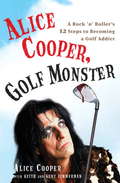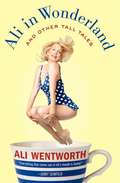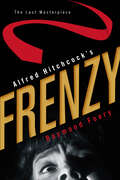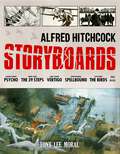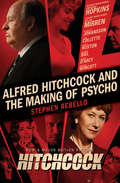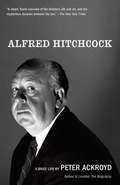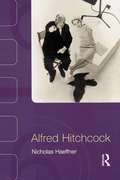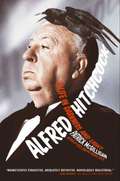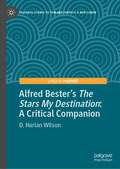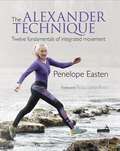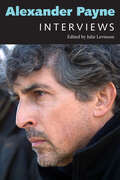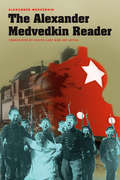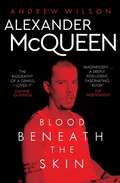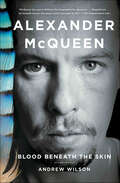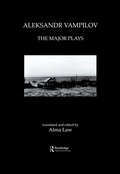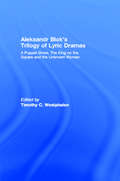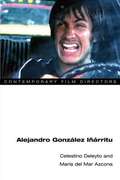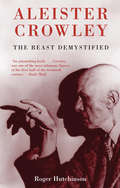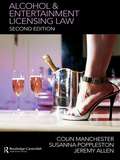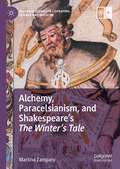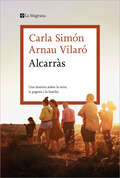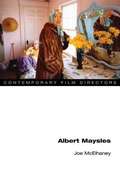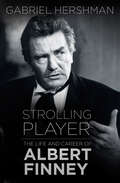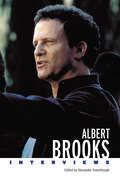- Table View
- List View
Alice Cooper, Golf Monster
by Keith Zimmerman Alice Cooper Kent ZimmermanAlice Cooper is hotter than ever, still playing up to 100 gigs a year with his his audiences growing younger. But 300 days a year, he is out on the golf course. That's because Alice credits golf as helping him overcome a self-destructive spiral into alcoholism. It's also because Alice turned out to be almost as good a golfer as he is a rocker. This book blends a rocker's uproarious tales of excess with a no holds-barred account of how Cooper substituted alcohol addiction with the lesser evil of hitting a little white ball. Alice Coopers rock 'n' roll's original misanthrope, the ultimate shock-rock, heavy-metal bad boy. With golf, as in music, he was way ahead of the cultural curve, his passion for the game predating golf's popularity surge among younger folks, hip professional athletes, and indeed Alice's music contemporaries, including Bob Dylan, Neil Young, Iggy Pop and Roger Waters. The nearest Alice Cooper has come to writing his autobiography. He is still a major rock touring artist. This title includes the story of his musical career and of his rehabilitation. It is a fascinating self-help programme by an unlikely role model.
Ali in Wonderland: And Other Tall Tales
by Ali WentworthGrowing up in a family of political journalists-and daughter of President Reagan's White House social secretary-Ali Wentworth rebelled against her blue-blood upbringing, embracing Hollywood, motorcycles, even a few wildly inappropriate marriage proposals. Today she is an acclaimed comedic actress and writer, former Oprah regular, wife of political and media star George Stephanopoulos, and a mother who lets her two girls eat cotton candy before bed. Though she's settled down, her rebellious nature thrives in her comedy and her view of her crazy world. In this addictively funny and warm memoir, she takes us through the looking glass and into the wonderland of her life, from a childhood among Washington's elite to a stint in the psych ward they called a New England prep school; days doing L.A. sketch comedy (with then-aspiring artists Will Ferrell and Lisa Kudrow) to a series of spectacularly failed loves (that eventually led her to Mr. Right). Constant throughout is her mother, Muffie-a flawlessly elegant yet firm, no-nonsense force of nature and pure WASP convictions. As charming and off-the-wall as Ali herself, Ali in Wonderland is an entertaining look at life that is both intimate and hilarious.
Alfred Hitchcock's Frenzy: The Last Masterpiece
by Raymond FoeryAfter an unparalleled string of artistic and commercial triumphs in the 1950s and 1960s, Alfred Hitchcock hit a career lull with the disappointing Torn Curtain and the disastrous Topaz. In 1971, the depressed director traveled to London, the city he had left in 1939 to make his reputation in Hollywood. The film he came to shoot there would mark a return to the style for which he had become known and would restore him to international acclaim. Like The 39 Steps, Saboteur, and North by Northwest before, Frenzy repeated the classic Hitchcock trope of a man on the run from the police while chasing down the real criminal. But unlike those previous works, Frenzy also featured some elements that were new to the master of suspense’s films, including explicit nudity, depraved behavior, and a brutal act that would challenge Psycho’s shower scene for the most disturbing depiction of violence in a Hitchcock film. In Alfred Hitchcock’s Frenzy: The Last Masterpiece, Raymond Foery recounts the history—writing, preprod
Alfred Hitchcock Storyboards
by Tony Lee MoralA one-of-a-kind historical document and celebration of the artwork behind several of the Master of Suspense&’s greatest films.This stunning coffee table book focuses on the storyboards for nine of Alfred Hitchcock&’s classic movies – Vertigo, The Birds, Psycho, North by Northwest, The 39 Steps, Torn Curtain, Marnie, Shadow of a Doubt and Spellbound. It includes never before-published images and incisive text putting the material in context and examining the role the pieces played in some of the most unforgettable scenes in cinema. Hitchcock author and aficionado Tony Lee Moral provides a fascinating and illuminating insight into the directorial mind of the Master of Suspense.
Alfred Hitchcock and the Making of Psycho
by Stephen RebelloA &“meticulous history&” of the classic suspense film based on exclusive interviews with the director, writers, cast, and crew (The New York Times Book Review).First released in June 1960, Psycho altered the landscape of horror films forever. But just as compelling as the movie itself is the story behind it, which has been adapted as a movie starring Anthony Hopkins as Hitchcock, Helen Mirren as his wife Alma Reville, and Scarlett Johansson as Janet Leigh. Stephen Rebello brings to life the creation of one of Hollywood&’s most iconic films, from the story of Wisconsin murderer Ed Gein, the real-life inspiration for the character of Norman Bates, to Hitchcock&’s groundbreaking achievements in cinematography, sound, editing, and promotion. Packed with captivating insights from the film&’s stars, writers, and crewmembers, Alfred Hitchcock and the Making of Psycho is a riveting and definitive history of a signature Hitchcock cinematic masterpiece.
Alfred Hitchcock
by Peter AckroydA gripping short biography of the extraordinary Alfred Hitchock, the master of suspense. Alfred Hitchcock was a strange child. Fat, lonely, burning with fear and ambition, his childhood was an isolated one, scented with fish from his father's shop. Afraid to leave his bedroom, he would plan great voyages, using railway timetables to plot an exact imaginary route across Europe. So how did this fearful figure become the one of the most respected film directors of the twentieth century? As an adult, Hitch rigorously controlled the press's portrait of him, drawing certain carefully selected childhood anecdotes into full focus and blurring all others out. In this quick-witted portrait, Ackroyd reveals something more: a lugubriously jolly man fond of practical jokes, who smashes a once-used tea cup every morning to remind himself of the frailty of life. Iconic film stars make cameo appearances, just as Hitch did in his own films: Grace Kelly, Cary Grant, and James Stewart despair of his detached directing style and, perhaps most famously of all, Tippi Hedren endures cuts and bruises from a real-life fearsome flock of birds. Alfred Hitchcock wrests the director's chair back from the master of control and discovers what lurks just out of sight, in the corner of the shot.
Alfred Hitchcock
by Nicholas HaeffnerNicholas Haeffner provides a comprehensive introduction to Alfred Hitchcock's major British and Hollywood films and usefully navigates the reader through a wealth of critical commentaries. One of the acknowledged giants of film, Hitchcock's prolific half-century career spanned the silent and sound eras and resulted in 53 films of which Rear Window (1954), Vertigo (1958) and Psycho (1960) are now seen as classics within the suspense, melodrama and horror genres. In contrast to previous works, which have attempted to get inside Hitchcock's mind and psychoanalyse his films, this book takes a more materialist stance. As Haeffner makes clear, Hitchcock was simultaneously a professional film maker working as part of a team in the film factories of Hollywood, a media celebrity, and an aspiring artist gifted with considerable entrepreneurial flair for marketing himself and his films. The book makes a case for locating the director's remarkable body of work within traditions of highbrow, middlebrow and lowbrow culture, appealing to different audience constituencies in a calculated strategy. The book upholds the case for taking Hitchcock's work seriously and challenges his popular reputation as a misogynist through detailed analyses of his most controversial films.
Alfred Hitchcock: A Life in Darkness and Light
by Patrick McgilliganIn a career that spanned six decades and more than sixty films, Alfred Hitchcock became the most widely recognized director who ever lived. His films -- including The 39 Steps, Notorious, Rear Window, Vertigo, Psycho, and The Birds -- set new standards for cinematic invention and storytelling Élan. Since his death, Hitchcock has become crystallized in the public imagination as the macabre Englishman, the sexual obsessive, the Master of Suspense. But this remarkable biography draws on prodigious new research to restore Hitchcock the man -- the ingenious craftsman, the avid collaborator, the constant trickster, provocateur, and romantic. Like Hitchcock's best films, Patrick McGilligan's life of Hitchcock is a drama full of revelation, graced by a central love story, dark humor, and cliff-hanging suspense: a definitive portrait of the most creative, and least understood, figure in film history.
Alfred Bester’s The Stars My Destination: A Critical Companion (Palgrave Science Fiction and Fantasy: A New Canon)
by D. Harlan WilsonIn this comprehensive study of The Stars My Destination, D. Harlan Wilson makes a case for the continued significance of Alfred Bester’s SF masterwork, exploring its distinctive style, influences, intertextuality, affect, and innovation as well as its extensive metafictional properties. In Stars, Bester established himself as a son of the pulp-SF and high-modernist writers that preceded him and a forefather to the New Wave and cyberpunk movements that followed his lead. Wilson’s study depicts Bester as an SF insider as much as an outlier, writing in the spirit of the genre but breaking with the fixation on hard science in favor of psychological interiority, literary experimentation, and adult themes. The book combines close-readings of the novel with broader concerns about contemporary media, technoculture, and the current state of SF itself. In Wilson’s view, SF is a moribund artform, and Stars foresaw the inevitable science fictionalization of our benighted world. With scholarly lucidity and precision, Wilson shows us that Stars pointed the way to what we have (un)become.
The Alexander Technique: Twelve fundamentals of integrated movement
by Penelope EastenThis book gets back to the core of the Alexander Technique (AT), much of which is not known even to most teachers. This is because Alexander (1869-1955) changed what he was doing at least three times, around 1912, 1923, and 1930, each time leaving key elements behind, unexplained. These lost elements include natural breathing, his biomechanics to alter the body for ourselves, the real thought processes of his directions, how he used inhibition and quiet attentiveness to discover intrinsic movement patterns, and how he used vision as part of his process. There are snippets of AT history throughout, and a potted history of what really happened in the AT, as it has not been told before, but the emphasis is on AT in the context of integrated movement.
Alexander Payne: Interviews (Conversations with Filmmakers Series)
by Julie LevinsonSince 1996, Alexander Payne (b. 1961) has made seven feature films and a short segment of an omnibus movie. Although his body of work is quantitatively small, it is qualitatively impressive. His movies have garnered numerous accolades and awards, including two Academy Awards for Best Adapted Screenplay. As more than one interviewer in this volume points out, he maintains an impressive and unbroken winning streak. Payne's stories of human strivings and follies, alongside his mastery of the craft of filmmaking, mark him as a contemporary auteur of uncommon accomplishment. In this first compilation of his interviews, Payne reveals himself as a captivating conversationalist as well. The discussions collected here range from 1996, shortly after the release of his first film, Citizen Ruth, to the 2013 debut of his film, Nebraska. He also mentions the long process of bringing to fruition his most recent film, Downsizing. Over his career, he muses on many subjects including his own creative processes, his commitment to telling character-centered stories, and his abiding admiration for movies and directors from across decades of film history. Critics describe Payne as one of the few contemporary filmmakers who consistently manages to buck the current trend toward bombastic blockbusters. Like the 1970s director-driven cinema that he cherishes, his films are small-scale character studies that manage to maintain a delicate balance between sharp satire and genuine poignancy.
The Alexander Medvedkin Reader
by Nikita Lary Jay Leyda Alexander MedvedkinFilmmaker Alexander Medvedkin (1900-89), a contemporary of Sergei Eisenstein and Alexander Dovzhenko, is celebrated today for his unique form of "total" documentary cinema, which aimed to bridge the distance between film and life, as well as for his use of satire during a period when the Soviet authorities preferred that laughter be confined to narrowly prescribed channels. This collection of selected writings by Medvedkin is the first of its kind and reveals how his work is a crucial link in the history of documentary film. Although he was a dedicated Communist, Medvedkin's satirical approach and social critiques ultimately led to his suppression by the Soviet regime. State institutions held back or marginalized his work, and for many years, his films were assumed to have been lost or destroyed. These texts, many assembled for this volume by Medvedkin himself, document for the first time his considerable achievements, experiments in film and theater, and attempts to develop satire as a major Soviet film genre. Through scripts, letters, autobiographical writings, and more, we see a Medvedkin supported and admired by figures like Eisenstein, Dovzhenko, and Maxim Gorky.
Alexander McQueen
by Andrew WilsonWhen Alexander McQueen committed suicide in February 2010, aged just 40, a shocked world mourned the loss of its most visionary fashion designer. McQueen had risen from humble beginnings as the youngest child of an East London taxi driver to scale the heights of fame, fortune and glamour. He designed clothes for the world's most beautiful women including Kate Moss and Naomi Campbell. In business he created a multi-million pound luxury brand that became a favourite with both celebrities and royalty, most famously the Duchess of Cambridge who wore a McQueen dress on her wedding day. But behind the confident facade and bad-boy image, lay a sensitive soul who struggled to survive in the ruthless world of fashion. As the pressures of work intensified, so McQueen became increasingly dependent on the drugs that contributed to his tragic end. Meanwhile, in his private life, his failure to find lasting love with a string of boyfriends only added to his despair. And then there were the dark secrets that haunted his sleep... A modern-day fairy tale infused with the darkness of a Greek tragedy, this book will tell the sensational story of McQueen's rise from his hard East London upbringing to the hedonistic world of fashion. Those closest to the designer - his family, friends and lovers - have spoken for the first time about the man they knew, a fragmented and insecure individual, a lost boy who battled to gain entry into a world that ultimately destroyed him.
Alexander McQueen: Blood Beneath the Skin
by Andrew WilsonThe first, definitive biography of the iconic, notoriously private British fashion designer Alexander McQueen “offers new insights...and provides unprecedented access to a misunderstood soul” (The Boston Globe).When forty-year-old Alexander McQueen committed suicide in February 2010, a shocked world mourned the loss. McQueen had risen from humble beginnings as the son of an East London taxi driver to scale the heights of fame, fortune, and glamour. He created a multimillion-dollar luxury brand that became a favorite with celebrities, including Kate Moss and Naomi Campbell. He designed clothes for the world’s most beautiful women and royalty, most famously the Duchess of Cambridge, who wore a McQueen dress on her wedding day.But behind the confident facade and bad-boy image, lay a sensitive soul who struggled to survive in the ruthless world of fashion. As the pressures of work intensified, McQueen became increasingly dependent on the drugs that contributed to his tragic end. Meanwhile, his failure to find lasting love in a string of boyfriends only added to his despair. And then there were the secrets that haunted his sleep…A modern-day fairy tale infused with the darkness of a Greek tragedy, Alexander McQueen provides “a thorough and emotionally compelling exploration…of a complex and enigmatic artist” (Publishers Weekly). Andrew Wilson’s “magnificent” (The Independent, UK) and “compelling and heavily researched bio” (Entertainment Weekly), featuring never-before-seen photographs and rare interviews, dispels myths, corrects inaccuracies, and shares new insights into McQueen’s private life and the source of his creative genius.
Aleksandr Vampilov: The Major Plays (Russian Theatre Archive Ser. #Vol. 6.)
by Alma LawFirst Published in 1996. Routledge is an imprint of Taylor & Francis, an informa company.
Aleksandr Blok's Trilogy of Lyric Dramas: A Puppet Show, The King on the Square and the Unknown Woman (Routledge Harwood Russian Theatre Archive Ser.)
by Timothy C. WestphalenAleksandr Blok's Trilogy of Lyric Dramas gathers together for the first time in English translation the first three plays by Aleksandr Blok, the pre-eminent poet of Russian Symbolism and one of the greatest poets of the twentieth century. The three plays that constitute the trilogy - A Puppet Show, The King on the Square and The Unknown Woman - are pivotal documents in the development of modernist drama. In his productions of A Puppet Show; and The Unknown Woman, Meyerhold first began to work the basic tenets of his approach to grotesque and constructivist theatre. Moreover, A Puppet Show provided the inspiration and much of the foundation for Meyerhold's theoretical writings. As a result, these plays are indispensable to any student of Meyerhold or modernist theatre. The plays are presented in the context of the poetry from which they issued in order to suggest how Blok developed the themes and motifs of the plays in other genres.
Alejandro González Iñárritu (Contemporary Film Directors)
by Celestino Deleyto Maria Del AzconaThis in-depth study of Mexican film director Alejandro González Iñárritu explores his role in moving Mexican filmmaking from a traditional nationalist agenda towards a more global focus. Working in the United States and in Mexico, Iñárritu crosses national borders while his movies break the barriers of distribution, production, narration, and style. His features also experiment with transnational identity as characters emigrate and settings change. In studying the international scope of Iñárritu's influential films Amores Perros, 21 Grams, and Babel, Celestino Deleyto and María del Mar Azcona trace common themes such as human suffering and redemption, chance, and accidental encounters. The authors also analyze the director's powerful visual style and his consistent use of multiple characters and a fragmented narrative structure. The book concludes with a new interview with Iñárritu that touches on the themes and subject matter of his chief works.
Aleister Crowley: The Beast Demystified
by Roger HutchinsonAleister Crowley (1875-1947) - mystic, writer, poet, astrologer, sexual revolutionary, painter, mountain climber and social critic - has a terrifying reputation. The contemporary press labelled him the 'wickedest man in the world', while he called himself the 'great beast'. Crowley dabbled in the occult, supported Germany in the First World War, was addicted to opiates, and many who associated with him died tragically in mysterious circumstances.Working from the starting point that behind the demonic reputation there stood a human being, and that beyond the self-proclaimed black magician there was a man hungry for publicity and fame, Roger Hutchinson lifts the smokescreen of mythology to reveal a truly astonishing figure.Why did this curious product of the Plymouth Brethren found the first 'hippy commune' in Sicily? What led this Cambridge graduate to be celebrated 20 years after his death on the cover of The Beatles' Sergeant Pepper's Lonely Hearts Club Band album? Why did Mussolini expel him from Italy? Why did a British magazine label him 'the man we'd like to hang'? Roger Hutchinson reveals the real Crowley: warts, wickedness, talent, courage, cowardice and all.
Alcohol and Entertainment Licensing Law
by Colin Manchester Susanna Poppleston Jeremy AllenThis comprehensive and authoritative guide to licensing law is co-authored by the UK’s only professor of licensing law and two eminent licensing practitioners. It provides a detailed exposition and contextual analysis of the legal provisions governing the licensing of alcohol and entertainment under the Licensing Act 2003, encompassing both the legislative and decision-making framework of the Act as well as its implications for human rights. Fully updated and revised, it covers the various forms of authorization for licensable activities and licence and certificate conditions that might be attached as well as the enforcement and appeal provisions of the Act. This new edition, building on the highly acclaimed original work published in 2005, includes subsequent legislative changes and case law decisions. New additions to this edition include: expanded coverage of enforcement provisions and police powers a revised and extended chapter on appeals, in light of the practical and procedural developments that have evolved in the appeal process amendments to existing regulations and the revised Statutory Guidance issued in 2007. This book is essential reading for all local authorities, legal advisers, licensing policy advisors, operators and the police as well as those applying for licences.
Alchemy, Paracelsianism, and Shakespeare’s The Winter’s Tale (Palgrave Studies in Literature, Science and Medicine)
by Martina ZamparoThis book explores the role of alchemy, Paracelsianism, and Hermetic philosophy in one of Shakespeare’s last plays, The Winter’s Tale. A perusal of the vast literary and iconographic repertory of Renaissance alchemy reveals that this late play is imbued with several topoi, myths, and emblematic symbols coming from coeval alchemical, Paracelsian, and Hermetic sources. It also discusses the alchemical significance of water and time in the play’s circular and regenerative pattern and the healing role of women. All the major symbols of alchemy are present in Shakespeare’s play: the intertwined serpents of the caduceus, the chemical wedding, the filius philosophorum, and the so-called rex chymicus. This book also provides an in-depth survey of late Renaissance alchemy, Paracelsian medicine, and Hermetic culture in the Elizabethan and Jacobean ages. Importantly, it contends that The Winter’s Tale, in symbolically retracing the healing pattern of the rota alchemica and in emphasising the Hermetic principles of unity and concord, glorifies King James’s conciliatory attitude.
Alcarràs: Una història sobre la terra, la pagesia i la família
by Carla SimónUna història sobre la terra, la pagesia i la família Un viatge al cor d'Alcarràs -tot el que hi ha al darrere i al cor la pel·lícula- que recull el guió i la concepció de la pel·lícula que ja és al cim del cinema en català: com va ser pensada, definida i rodada per la seva creadora, Clara Simón, i el coguinista per Arnau Vilaró . A les pàgines d' aquest llibre, no només hi podrem conèixer Alcarràs i la família Solé, sinó també la Carla Simón i la seva manera de fer cinema i d'entendre'l: sempre des de l'amor i el respecte, treballant les pel·lícules com si fossin peces d'orfebreria La crítica ha dit:«Alcarràs és una joia amb gust a préssec i Carla Simón una directora genial que ha fet orfebreria! Una pel·lícula que, per sobre de tot, és veritat».Jordi Basté «A Alcarràs, la llengua ens situa en aquest punt del mapa i no en cap altre, una parla indestriable de tots els sorolls i silencis».Marta Rojals «Alcarràs ens ha fet pujar l’autoestima com a país. Aquest premi ha anat molt més enllà d’una pel·lícula de cinema, ha anat a un poble, a una llengua, a un camp que es perd».Natza Farré «Senzillament, la vida».Jaume Figueras
Albert Maysles (Contemporary Film Directors)
by Joe McelhaneyAlbert Maysles has created some of the most influential documentaries of the postwar period. Such films as Salesman,Gimme Shelter, and Grey Gardens continue to generate intense debate about the ethics and aesthetics of the documentary form. In this in-depth study, Joe McElhaney offers a novel understanding of the historical relevance of Maysles. By closely focusing on Maysles's expressive use of his camera, particularly in relation to the filming of the human figure, this book situates Maysles's films within not only documentary film history but film history in general, arguing for their broad-ranging importance to both narrative film and documentary cinema. Complete with an engaging interview with Maysles and a detailed comparison of the variant releases of his documentary on the Beatles (What's Happening: The Beatles in the U.S.A. and The Beatles: The First U.S. Visit), this work is a pivotal study of a significant filmmaker.
Albert Finney: A Well-Seasoned Life
by Gabriel Hershman‘Hershman has managed to gather a huge amount of information and distill it into a book that is not only respectful but full of insights into what makes this unstarriest of stars able to produce brilliant work without appearing to break a sweat.’ - Kathryn Hughes, Mail on SundayHe was a Salford-born, homework-hating bookie’s son who broke the social barriers of British film. He did his share of roistering, and yet outlived his contemporaries and dodged typecasting to become a five-time Oscar nominee and one of our most durable international stars. Bon vivant, perennial rebel, self-effacing character actor, charismatic charmer, mentor to a generation of working-class artists, a byword for professionalism, lover of horseflesh and female flesh – Albert Finney is all these things and more.Gabriel Hershman’s colourful and riveting account of Finney’s life and work, which draws on interviews with many of his directors and co-stars, examines how one of Britain’s greatest actors built a glittering career without sacrificing his integrity.
Albert Brooks: Interviews (Conversations with Filmmakers Series)
by Alexander GreenhoughAlbert Brooks: Interviews brings together fourteen profiles of and conversations with Brooks (b. 1947), in which he contemplates, expounds upon, and hilariously jokes about the connections between his show business upbringing, an ambivalence about the film industry, the nature of fame and success, and the meaning and purpose of comedy. Throughout all these encounters, Brooks expresses an unwavering commitment to his own artistic expression as a filmmaker and a rejection of mainstream conventions. With his questioning and critical disposition, nothing seems certain for Albert Brooks except for the integrity of art and the necessity for a wry skepticism about the incongruities of everyday life in corporate America. Brooks is neither a Hollywood insider nor an outsider. He’s somewhere in-between. Since the early 1970s, this inimitable actor-writer-director has incisively satirized the mass media system from within. After initial work as an inventive comedian, both live and on network television, Brooks contributed six shorts to the first season of Saturday Night Live, which earned him a cult following for their avant-garde form and sensibility. These were followed by his feature debut, Real Life, the first of only seven films—including Modern Romance, Lost in America, and Defending Your Life—that Brooks has directed to date. His limited output reflects not only the difficulty in financing idiosyncratic films, but equally the exacting seriousness which Brooks has in making audiences laugh and think at the same time.
Alaska: Los sueños se cumplen... si te animás a ser vos
by Gimena SauchencoEl libro de la youtuber uruguaya más conocida y más querida. En ese libro, Gime, más conocida como Alaska, cuenta su historia, la historia de una adolescente uruguaya como cualquier otra, pero además, reflexiona sobre la vida, cuáles son sus miedos, qué piensa sobre la sociedad, entre otras cosas, que son temas que preocupan y ocupan a los adolescentes de hoy.
